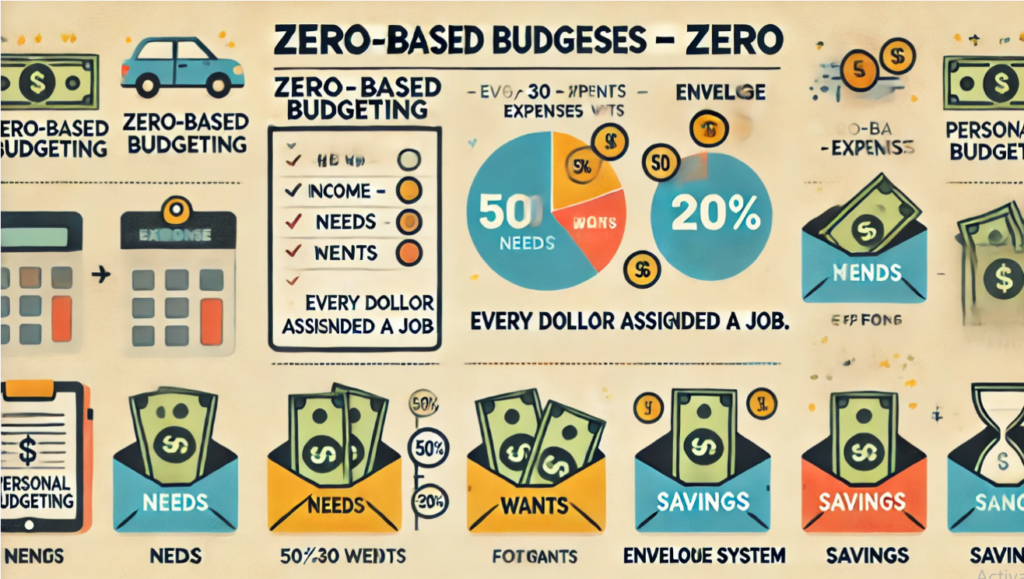
Budgeting is an essential aspect of financial management for families. It plays a crucial role in ensuring that families can meet their financial obligations, save for the future, and achieve their long-term financial goals. Without a budget, families may find themselves struggling to make ends meet, constantly feeling stressed about money, and unable to plan for the future. In contrast, good financial management can significantly reduce stress levels, improve family relationships, and provide a sense of security and stability for the future. Setting and achieving budgeting goals as a family is an important aspect of financial planning. It allows families to work together towards common financial objectives, instilling a sense of teamwork and shared responsibility.
Understanding Family Budgeting
Defining Family Budgeting:
A family budget is a detailed plan that outlines a family’s income and expenses over a specific period of time, typically on a monthly basis. It helps families track their spending, prioritize their financial goals, and make informed decisions about their money. Family budgeting is crucial for financial health because it allows families to manage their money effectively, avoid overspending, and save for future needs and goals. By setting a budget, families can also identify areas where they can reduce expenses and allocate more funds towards important priorities, such as paying off debt or building an emergency fund. Ultimately, a family budget helps to create a sense of financial security and stability for the entire household.

Common Financial Challenges Families Face:
Many families face common financial challenges such as managing expenses, dealing with debt, saving for education, affording childcare, and covering housing costs. These challenges can put a strain on a family’s finances and require careful budgeting and planning to overcome.

Benefits of Budgeting for Families:
Budgeting for families can provide a range of benefits. By creating a budget, families can gain better control over their spending habits, which can ultimately lead to reduced financial stress. Additionally, budgeting allows families to prioritize their financial goals and increase their savings over time. Moreover, budgeting can also set a good example for children, teaching them important money management skills that will benefit them throughout their lives. Overall, budgeting can help families achieve greater financial stability and peace of mind.

Setting Realistic Budgeting Goals
SMART Goals (Specific, Measurable, Achievable, Relevant, Time-bound):
To apply the SMART Goals framework to family budgeting, you can start by setting specific financial goals, such as saving for a family vacation or paying off a certain amount of debt. Then, make sure these goals are measurable by setting specific dollar amounts or percentages to achieve. Next, ensure that the goals are achievable by considering your family’s income and expenses. It’s important to also make sure the goals are relevant to your family’s overall financial priorities. Lastly, set a time-bound deadline for achieving each goal, such as saving a certain amount by the end of the year. By following the SMART Goals framework, you can create a more focused and effective family budgeting plan.

Short-Term vs. Long-Term Goals:
When it comes to setting financial goals, it’s important to consider both short-term and long-term priorities. Short-term goals, like paying off credit card debt, can provide immediate relief and reduce financial stress. On the other hand, long-term goals, such as saving for college or retirement, are essential for ensuring future financial security. Balancing these priorities requires careful planning and budgeting to address immediate needs while also investing in long-term financial stability. It’s important to find a balance that allows you to address both short-term and long-term goals to achieve a healthy financial future.

Examples of Common Family Budgeting Goals:
Common family budgeting goals can include saving for emergencies, paying down debt, saving for vacations, and making home improvements. These goals can help families achieve financial stability and work towards their long-term financial objectives. By creating a budget and prioritizing these goals, families can better manage their finances and plan for the future.
Assessing Your Family’s Current Financial Situation
Assessing your family’s current financial situation is an important step in achieving your financial goals. One way to do this is by tracking your income and expenses. There are many tools and apps available, such as Mint and YNAB, that can help you easily track where your money is going and how much is coming in. Identifying your spending patterns is another crucial aspect of assessing your financial situation. Categorizing your expenses into needs versus wants can help you identify areas where you may be overspending and where you can cut back. Evaluating your debt and savings is also essential. Take a look at your current debt levels, including credit card debt, student loans, and mortgages.

Creating a Family Budget Plan
Creating a family budget plan is an essential step in managing your household finances and ensuring that you are prepared for both expected and unexpected expenses. There are several different budgeting methods that families can use to effectively manage their money. The 50/30/20 rule is a popular and simple approach to budgeting. This method involves allocating 50% of your income to needs such as rent, utilities, and groceries, 30% to wants like entertainment and dining out, and 20% to savings and debt repayment. Zero-based budgeting is another effective method for families to consider. With this approach, every dollar of income is allocated to specific expenses, savings, and debt payments.

Strategies to Stick to Your Budget
In order to stick to your budget, there are several strategies you can implement to help you stay on track. First, involving the whole family in the budgeting process can make it a team effort and encourage children to understand basic financial concepts. This can help create a sense of accountability and shared responsibility for the family’s financial well-being. Another important strategy is cutting unnecessary costs. This involves identifying and eliminating non-essential spending, such as subscriptions or dining out. By being mindful of where your money is going, you can make more intentional decisions about your spending and prioritize your financial goals. Building an emergency fund is also crucial for sticking to your budget.

Saving for the Future
Establishing savings goals is an important step in securing your financial future. Whether it’s setting up an emergency fund for unexpected expenses, saving for a dream vacation, investing in education, or planning for retirement, having specific goals in mind can help you stay focused and motivated. One effective strategy for reaching these goals is to automate your savings. By setting up automatic transfers from your checking account to a savings account or investment fund, you can ensure that a portion of your income goes directly toward your savings goals without the temptation to spend it elsewhere. It’s also important to teach kids about money and the value of saving from a young age.

Managing Debt Effectively
Managing debt effectively is crucial for maintaining financial stability and reducing the burden of debt. One important strategy is to prioritize high-interest debt, such as credit cards or loans with the highest interest rates. By focusing on paying off these high-interest debts first, you can save money on interest and make faster progress towards becoming debt-free. When it comes to tackling multiple debts, there are two popular strategies to consider: the debt snowball and the debt avalanche. The debt snowball method involves paying off the smallest debts first, while the debt avalanche method involves paying off the debts with the highest interest rates first. Choosing the right strategy for your family’s situation depends on factors such as your overall debt load and the interest rates on your various debts.

Celebrating Milestones and Adjusting Goals
It’s important to celebrate milestones and successes when it comes to managing your family’s finances. Recognizing and rewarding small financial wins can help keep everyone motivated and focused on achieving larger goals. As life circumstances change, it’s also crucial to adjust your budgeting goals. Whether it’s a new job, a new baby, or a move to a new location, these changes can have a significant impact on your financial situation. Taking the time to revisit and adjust your budget can help ensure that you’re still on track to meet your family’s needs and future goals. Additionally, it’s essential to be prepared for unexpected economic shifts.

Conclusion
Setting and achieving family budgeting goals is crucial for the financial well-being of your household. It allows you to track your income and expenses, prioritize your spending, and work towards your financial objectives. Starting small with budgeting efforts can be less intimidating and more manageable, but it’s important to stay consistent. Even small, incremental progress can make a significant impact over time. Developing good financial habits and sticking to a budget can lead to long-term stability and less stress for the entire family. It can provide a sense of security and peace of mind, knowing that you are in control of your finances and working towards a secure future. So, I encourage you to take that first step and start setting and achieving your family budgeting goals today.














